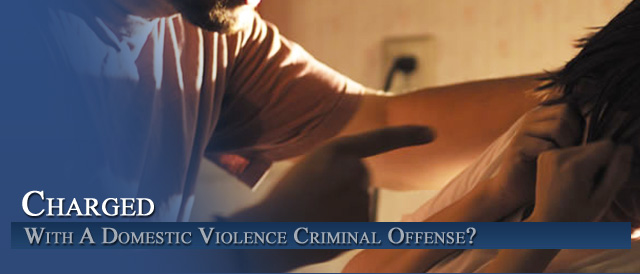
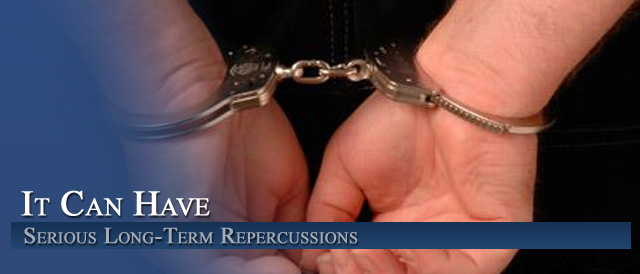


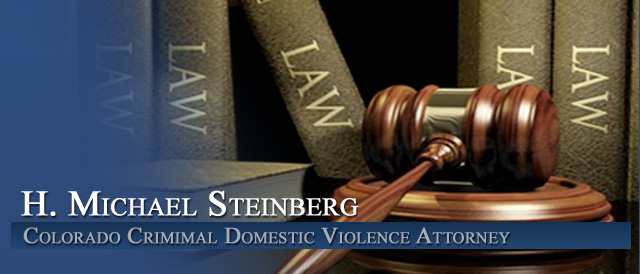
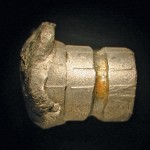
_________________________
Outrage In Criminal Prosecutions – The Damage Done By Prosecution “Experts” In Ballistics
Outrage In Criminal Prosecutions – The Damage Done By Prosecution “Experts” In Ballistics
By H. Michael Steinberg Colorado Domestic Violence Criminal Defense Lawyer
Outrage In Criminal Prosecutions – The Damage Done By Prosecution “Experts” In Ballistics – The impact of so called prosecution “experts” in criminal cases is powerful and sometimes determinative of the outcome of a criminal case. Over the last several years experts, such as ballistics technicians, have come under attack for suggesting that there skills at matching bullets to specific weapons is 100% accurate.
This article addresses the reason why opinions of so called ballistics experts should be challenged in and out of the courtroom.
The Typical Ballistics “Expert” Case
The usual scenario follows along these lines:
1. The police locate so called bullet “slugs” from a victim or from the scene of a crime.
2. A weapon thought to have been used to commit the crime is located.
3. A so called “ballistics expert” compares the striations (known as lands and grooves) to sample bullets fired from the target weapon, (the more accurate term for the expert is “firearms identification” expert)
4. The expert offers an opinion at trial that the markings on the bullets are “unique to that gun and that gun only.”
In a recent case (2015) from the District of Columbia – appellate Judge Catherine Easterly, referring to this issue, said:
“… such claims of precise ballistics matches (is like) ‘the vision of a psychic’ offering testimony of “foundation-less faith in what he believes to be true,”
The Truth About The “Certainty” Behind Ballistics Expert Testimony
The moment that the State’s expert testifies that he or she is 100% certain that a certain bullet matches a certain gun, that expert is contradicting TWO National Research Council panels.
The experts from the NRC have found that there:
“is no statistical basis to determine how often bullets fired by different weapons might look alike, or even whether a firearm makes a unique, reproducible mark…,”
Unsupportable Claims
ANY time a forensic expert tells a jury that he or she is absolutely certain or has “100% scientific certainty,” behind their opinion – juries should doubt that representation. This includes such forensic testimony in the areas of the subjective analysis of hair samples, bite marks, burn patterns or tool marks on firearms.
The rules of evidence, as interpreted nationally, call for an expert opinion more in line with reality. A match in this area should reflect the expert opinion “to a reasonable degree of scientific certainty,” and NOT to an “absolute certainty.”
The assumption that underlays this entire area – called “ballistic imaging” – (now under full frontal attack), that a firearm barrel always leaves a unique tool mark on an object, such as a bullet and that tool mark evidence and is always “reproducible” is being attacked at several levels.
The National Research Council stated the following about the identification process of firearms – ballistics testimony:
“To be useful for identification, the characteristic marks left by firearms must not only be unique but reproducible – that is, the unique characteristics must be capable of being deposited over the multiple firings so that they can be found on recovered evidence and successfully compared with those on other items.”
The Attack On This Testimony Is Based On The “Classification” Of Firearms Tool Marks
How firearms identification experts conduct their investigation
Fundamentally, a firearms examiner compares evidence of tool marks on ammunition components recovered from crime scenes with test tool marks that they independently produce on other ammunition components by firing a specific “suspect” firearm.
In making this comparison – IF the same “class characteristics” are found on both the seized evidence and the test result tool marks, (that is the characteristics have the same rifling impressions on a test fired bullet and an evidence bullet recovered from a crime scene) there is a finding of “a match” and the expert witness then offers an opinion of the meaning of that match.
The problem, as more fully described below, is the interpretation of the tool mark’s “individual characteristics” that permit the expert to opine that there is, in fact, a match, after examination of those individual characteristics under a “comparison microscope,” is based on flawed science which requires a great deal of research.
The opinion sought by the State of Colorado and other states in most criminal cases is that the individual characteristics of the tool marks produced by a weapon on the bullets that leave that weapon’s barrel are so similar to one another that they can only have been made by the same barrel.
The “Classes” Of Tool Marks – Understanding Firearms Identification Evidence
Tool marks are:
1. …either “striated” tool marks (a pattern of scratches or striae produced by the parallel motion of tools against objects – (e.g., the marks gun barrels produce on bullets), they are “impression” tool marks which are typically produced on objects by the perpendicular, pressurized impact of tools (e.g., firing pin impressions or breech face marks produced on cartridge cases by the firing pins or breech faces of guns), or they are “rifling” impressions made on bullets. These latter “class characteristics” reflect the number, width and direction of twist of the lands and grooves in the types of gun barrels blood pressure that fired them.
2. Grouped Into Classes and assigned:
- A class
- A subclass, and
- individual characteristics.
3. The specifically designed features of tools are identified by the class characteristics of the tool marks produced by all tools of a certain type.
4. The class characteristics of rifling are identified by microscopic individual characteristics (the rifling impressions). The striations left on each bullet by the gun barrel of a firearm are what is said to be unique to that gun and are represented by firearms experts as random imperfections or irregularities on tool surfaces produced by the manufacturing process and/or subsequent use, wear, corrosion or damage of that gun.
The Rub – Firearms Are Not Always 100% “Unique” And Are NOT Always Capable Of Producing “Unique” Tool Marks
Although experts in the field of tool marks assert that every firearm produces unique tool marks with unique individual characteristics, today’s manufacturing processes have established that this belief is not necessarily true any longer.
The truth is some guns and tools are NOT capable of producing unique tool marks when they leave the assembly line. Some manufacturing processes create firearms so close in quality that they cannot be distinguished from one another. The kind of “individual characteristics” which firearms and tool mark examiners rely upon to be make them unique are not always present in a newly manufactured batch of firearms.
Additional Confusion In Firearms Identification – Categories As To What Constitutes “Individual Characteristics”
The uniqueness and reproducibility of firearm related tool marks is in serious question on several grounds. The “problem areas” can be classified as follows:
Problem 1: Firearms Identification Testimony – Defining “Individual Characteristics”
The term “individual characteristics” usually refers to the microscopic marks that create the alleged unique pattern that serves as the basis to find a match between a bullet casing and a firearm. Because there is “overlap” between the individual characteristics of the tool marks made by different tools, there is the constant danger of misidentifications that can be the result of, not a unique pattern, but a resemblance between firearms that, even under a comparison microscope, makes the firearms difficult to distinguish one from the other.
Problem 2: Firearms Identification Testimony – Tool Marks Change Over Time
Another problem area is the fact that even individual firearms change over time. Because of the impact of the aging of firearms, unlike fingerprint identification which remains constant, tool marks may reflect changes in the firearms or other tool surfaces that occurs as the tool or firearm is used as a result of damage or corrosion to the tool or firearm.
One Judge describes this situation as follows:
“Just because the marks on the [cartridge] casings are different does not mean that they come from different guns. Repeated firings from the same weapon, particularly over a long period of time, could produce different marks as a result of wear or simply by accident”
Problem 3: Firearms Identification Testimony – Confusing Subclass With Individual Characteristics
There are occasions when a firearms examiner may offer an opinion of a “match” based on such evidence as the individual characters of firing pin impressions and breech face marks.
Recent research has demonstrated that there is a serious possibility of misidentification in this area because of the lack of either:
- strict rules for determining whether a microscopic pattern on a tool mark is an
- individual or a subclass characteristic or
- strict rules as to which tools or manufacturing processes do or do not produce tool marks with subclass characteristics.
Outrage In Criminal Prosecutions – The Damage Done By Prosecution “Experts” In Ballistics
If you found any of the information I have provided on this web page article helpful please click my Plus+1 or the Share buttons below so that others may also find it.
Never stop fighting – never stop believing in yourself and your right to due process of law.
ABOUT THE AUTHOR: H. Michael Steinberg – Email The Author at [email protected] – A Denver Colorado Criminal Defense Lawyer – or call his office at 303-627-7777 during business hours – or call his cell if you cannot wait and need his immediate assistance – 720-220-2277. Attorney H. Michael Steinberg is passionate about criminal defense. His extensive knowledge and experience of Colorado Criminal Law gives him the edge you need to properly handle your case.
“A good criminal defense lawyer is someone who devotes themselves to their client’s case from beginning to end, always realizing that this case is the most important thing in that client’s life.”
 You should be careful to make a responsible choice in selecting a Colorado Criminal Defense Lawyer – and we encourage you to “vet” our firm. Over the last 40 plus years – by focusing ONLY on Colorado criminal law – H. Michael has had the necessary time to commit to the task of constantly updating himself on nearly every area of criminal law, to include Colorado criminal law and procedure and trial and courtroom practice. H. Michael works hard to get his clients the best possible results in and out of the courtroom. He has written, and continues to write, extensively on Colorado criminal law and he hopes this article helps you in some small way – Outrage In Criminal Prosecutions – The Damage Done By Prosecution “Experts” In Ballistics.
You should be careful to make a responsible choice in selecting a Colorado Criminal Defense Lawyer – and we encourage you to “vet” our firm. Over the last 40 plus years – by focusing ONLY on Colorado criminal law – H. Michael has had the necessary time to commit to the task of constantly updating himself on nearly every area of criminal law, to include Colorado criminal law and procedure and trial and courtroom practice. H. Michael works hard to get his clients the best possible results in and out of the courtroom. He has written, and continues to write, extensively on Colorado criminal law and he hopes this article helps you in some small way – Outrage In Criminal Prosecutions – The Damage Done By Prosecution “Experts” In Ballistics.
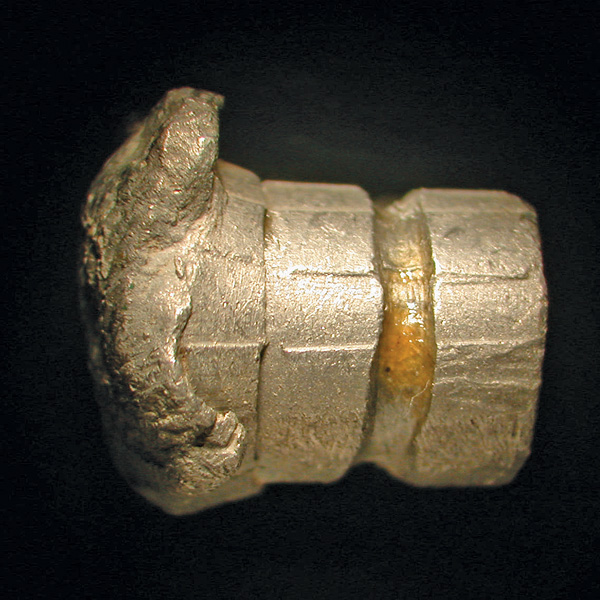
Other Articles of Interest:
- FAQ – Under Investigation In Colorado Child Abuse Cases – If You Are Investigated for Child Abuse
- Colorado Criminal Domestic Violence Law – Understanding The Colorado Laws Governing Dismissal In Colorado Domestic Violence Cases
- Colorado Criminal Law – Understanding Criminal Mischief 18-4-501
- Experienced Colorado Domestic Violence Criminal Lawyers in Colorado – Does Experience Really Make A Difference In A Colorado Criminal Defense Lawyer?
- Colorado Domestic Violence Law: Why the Police Make Immediate Arrests in Domestic Violence Cases












